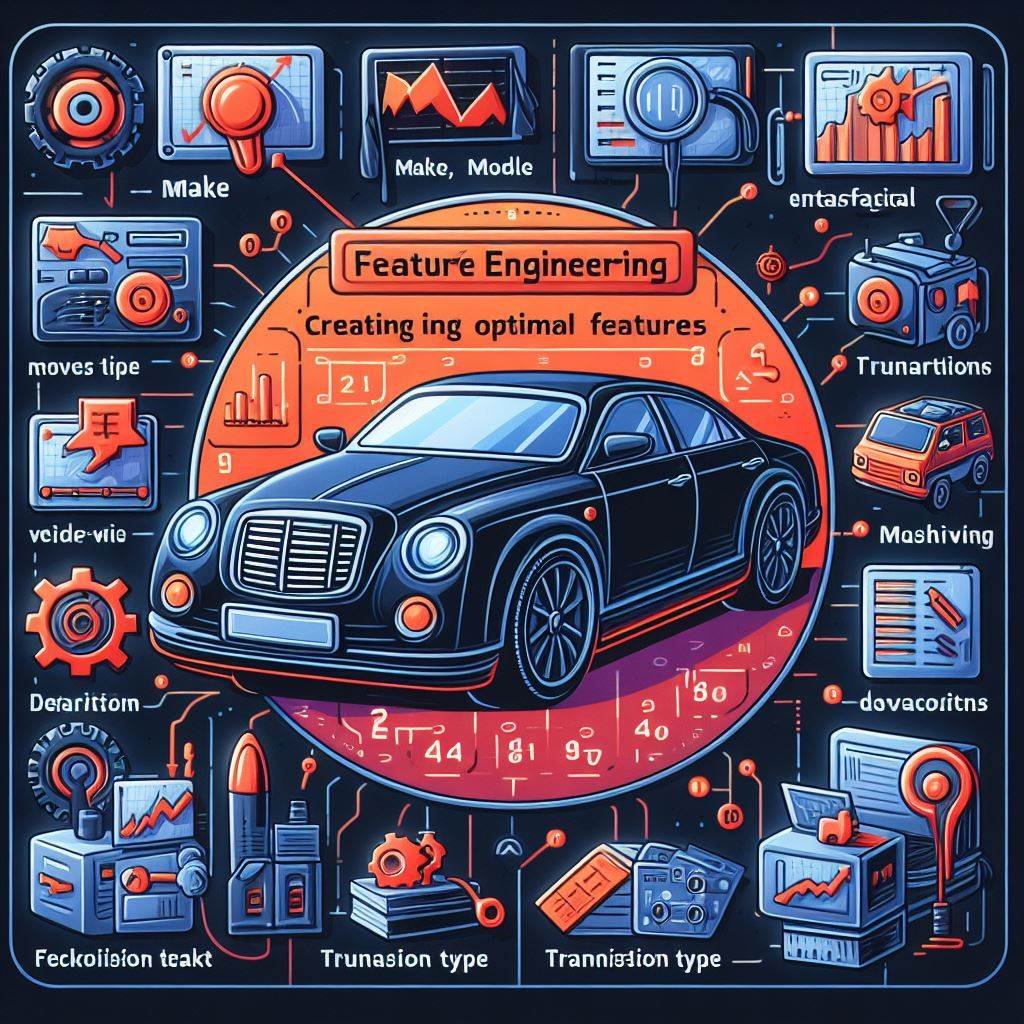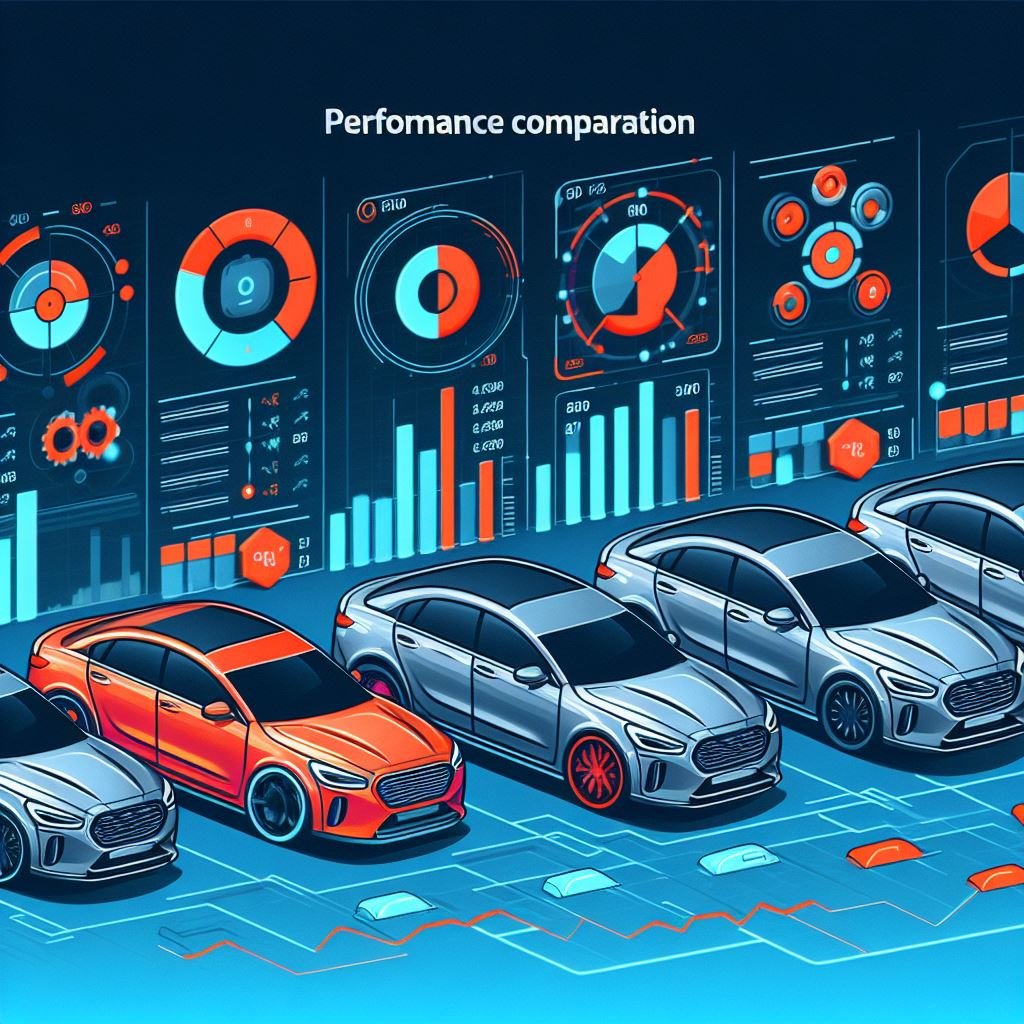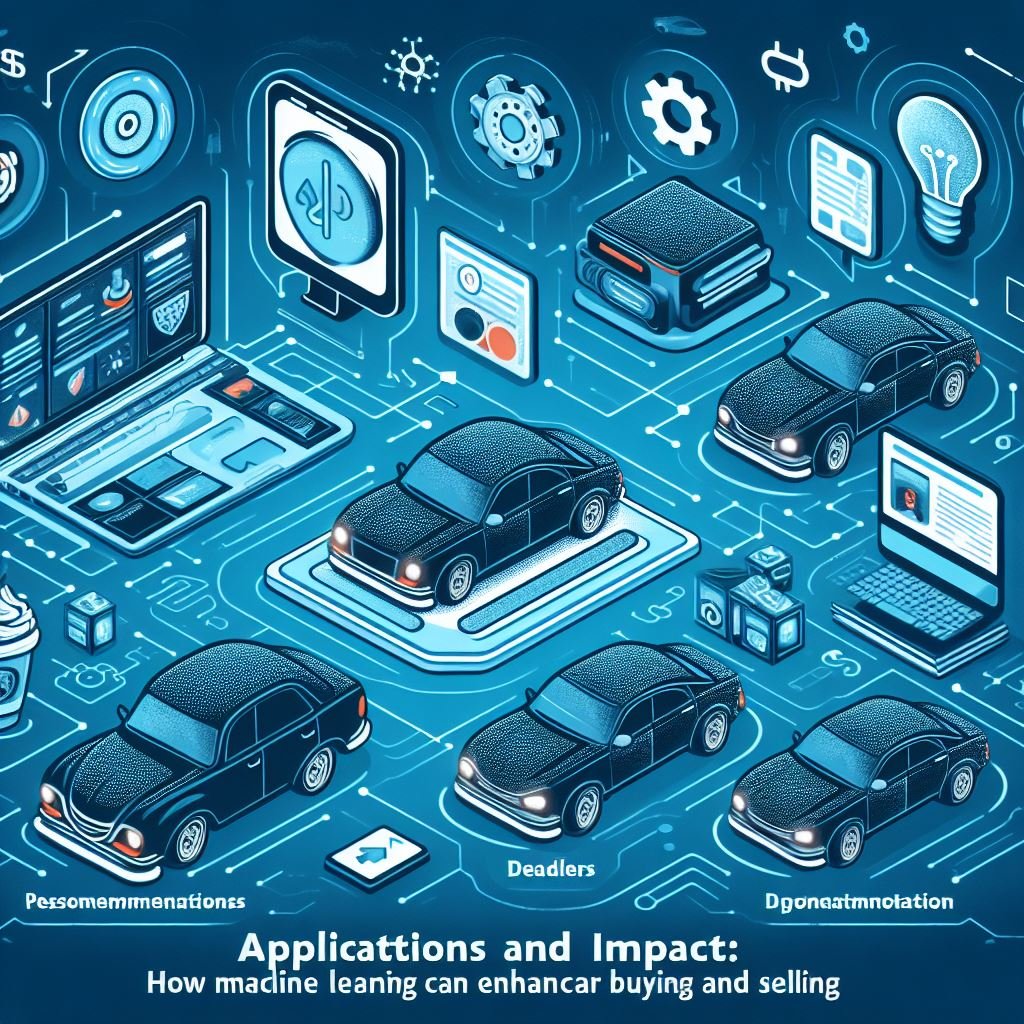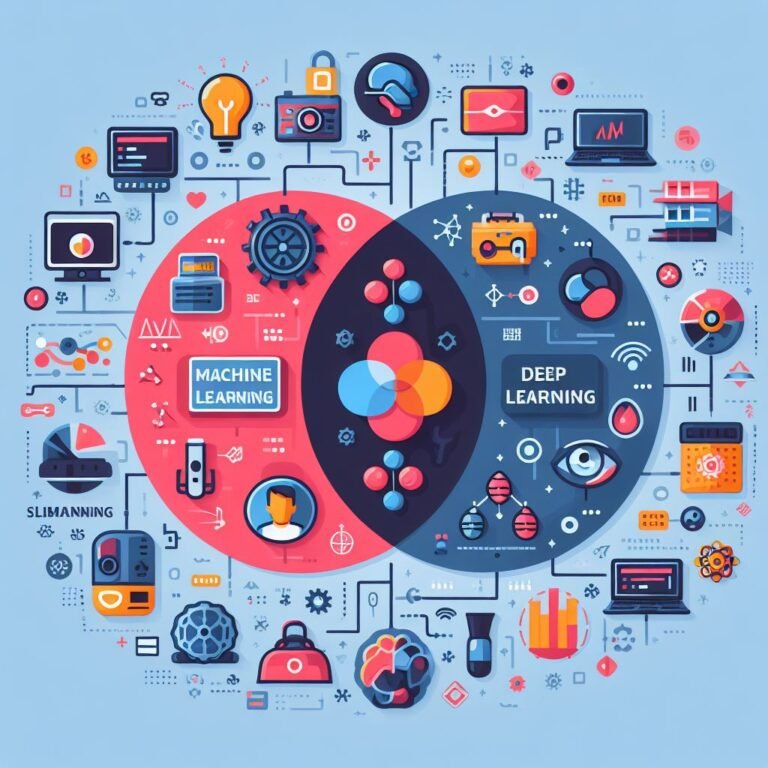Car Price Prediction Using Machine Learning
Determining the accurate price of a used car is a complex task that involves considering numerous factors, ranging from the vehicle’s make and model to its age, mileage, and overall condition. This challenge has traditionally been addressed by human experts, who rely on their knowledge and experience to estimate a car’s value. However, with the advent of machine learning, a data-driven approach to car price prediction has emerged, promising greater accuracy and efficiency through the use of the “Car Price Prediction Using Machine Learning” methodology. This technique leverages historical data and advanced algorithms to more precisely evaluate a vehicle’s worth.
Machine Learning: A Data-Driven Approach to Car Price Prediction
Machine learning is a subset of artificial intelligence that enables computers to learn from data and make predictions or decisions without being explicitly programmed. By leveraging large datasets and advanced algorithms, machine learning models can identify patterns and relationships that are difficult for humans to discern, making them well-suited for tasks like car price prediction.
Project Goal: Building a Machine Learning Model for Car Price Prediction
The primary objective of this project is to develop a machine learning model that can accurately predict the prices of used cars based on various features and attributes. By harnessing the power of historical data and sophisticated algorithms, the model aims to provide reliable and consistent car valuations, ultimately benefiting both buyers and sellers in the automotive market.
Literature Review: Existing Techniques for Car Price Prediction
Numerous researchers have explored the application of machine learning techniques to car price prediction. Some notable approaches include:
- Linear Regression: A classical statistical method that models the relationship between independent variables (car features) and the dependent variable (price).
- Decision Trees and Random Forests: Tree-based models that recursively partition the data based on feature values, offering interpretability and handling of non-linear relationships.
- Support Vector Machines (SVMs): A powerful algorithm that constructs a hyperplane in high-dimensional space to classify or predict numerical values.
- Neural Networks: Inspired by the human brain, these models can learn complex patterns and relationships in data, making them suitable for non-linear problems like car price prediction.
While each technique has its strengths and weaknesses, the choice of algorithm often depends on the specific characteristics of the dataset and the desired trade-off between accuracy, interpretability, and computational complexity.
Data Acquisition and Preprocessing for Car Price Prediction
The first step in building a machine learning model for car price prediction is to acquire relevant data. This can be obtained from various sources, such as automotive websites, classified advertisements, or dealer databases. Once the data is collected, it undergoes a preprocessing phase to handle missing values, remove outliers, and convert categorical variables into a format suitable for machine learning algorithms.
Exploratory Data Analysis: Understanding Factors Affecting Car Prices
Before diving into model building, it’s crucial to gain insights into the data through exploratory data analysis (EDA). This involves visualizing and analyzing the relationships between different features and the target variable (car price). EDA can reveal important patterns, correlations, and potential issues within the data, informing the subsequent feature engineering and model selection steps.
Feature Engineering: Creating Optimal Features for Machine Learning Models
Feature engineering is the process of selecting, transforming, and creating new features from the existing data to improve the performance of machine learning models. In the context of car price prediction, this may involve:
- Encoding categorical variables (e.g., make, model, transmission type) into numerical form
- Deriving new features from existing ones (e.g., age of the car from the year of manufacture)
- Scaling numerical features to ensure they are on a similar range
- Handling missing data through imputation or removal techniques
Effective feature engineering can significantly enhance the predictive power of machine learning models and is a crucial step in the modeling process.
Machine Learning Algorithms for Car Price Prediction
Based on the literature review and the characteristics of the dataset, several machine learning algorithms can be explored for car price prediction:
- Linear Regression: A simple yet powerful algorithm that models the linear relationship between features and the target variable.
- Decision Trees and Random Forests: Tree-based models that can capture non-linear relationships and handle mixed data types (numerical and categorical).
- Support Vector Machines (SVMs): A versatile algorithm that can effectively handle high-dimensional data and non-linear relationships.
- Neural Networks: Particularly deep neural networks, which can learn complex patterns and relationships in the data, potentially improving prediction accuracy.
Each algorithm has its strengths and weaknesses, and a thorough evaluation is necessary to determine the most suitable approach for the given dataset and problem.
Model Training and Evaluation: Optimizing Performance for Car Price Prediction
Once the relevant features and algorithms have been selected, the next step is to train and evaluate the machine learning models. This typically involves:
- Splitting the data: Dividing the dataset into training and testing sets to ensure the model is evaluated on unseen data.
- Hyperparameter tuning: Optimizing the model’s hyperparameters (e.g., learning rate, regularization strength) to improve its performance.
- Cross-validation: Evaluating the model’s performance on multiple splits of the data to obtain a more robust estimate of its accuracy.
- Performance metrics: Calculating appropriate metrics, such as mean squared error (MSE), mean absolute error (MAE), or R-squared (R²), to quantify the model’s predictive performance.
This iterative process of training, evaluating, and fine-tuning the models is crucial to ensure the best possible performance for car price prediction.
Performance Comparison: Identifying the Best Model for Car Price Prediction
After training and evaluating multiple machine learning models, it’s essential to compare their performance to identify the most accurate and reliable approach for car price prediction. This can be achieved by:
- Creating a performance summary table or visualizations that display the evaluation metrics for each model.
- Analyzing the strengths and weaknesses of each model based on the evaluation results and the characteristics of the dataset.
- Considering factors such as model complexity, interpretability, and computational requirements in addition to predictive performance.
The model with the best balance of accuracy, interpretability, and efficiency can be selected as the final choice for car price prediction.
Model Selection and Interpretation: Choosing the Most Effective Model for Car Price Prediction
Based on the performance comparison, the most effective machine learning model for car price prediction can be selected. This decision should consider not only the model’s predictive accuracy but also its interpretability and practical implications. For instance, if interpretability is a priority (e.g., to understand the factors influencing car prices), a simpler model like a decision tree or linear regression might be preferred over a complex neural network, even if the latter has slightly higher accuracy. Additionally, it’s important to interpret the chosen model’s parameters or feature importances to gain insights into the key factors driving car prices. This understanding can inform business decisions and pricing strategies in the automotive industry.
Results and Discussion: Insights from Machine Learning-Based Car Price Prediction
The results of the machine learning model for car price prediction should be thoroughly analyzed and discussed. Key insights may include:
- The most influential features for determining car prices (e.g., mileage, age, make, and model).
- The impact of different features on the predicted price, both individually and in combination.
- Comparisons between the model’s predictions and actual car prices, highlighting areas of strength and potential for improvement.
- Limitations or biases in the data or model that may affect the accuracy of predictions.
These insights can not only validate the effectiveness of the machine learning approach but also provide valuable information for stakeholders in the automotive industry, such as dealers, buyers, and sellers.
Limitations and Future Directions: Refining Our Car Price Prediction Model
While the machine learning model developed in this project may provide accurate and reliable car price predictions, it’s essential to acknowledge its limitations and potential areas for improvement. These may include:
- Data limitations: The availability and quality of data can impact the model’s performance. Incorporating additional features or expanding the dataset could enhance predictions.
- Model assumptions: Certain assumptions or simplifications made during the modeling process may introduce biases or inaccuracies in specific scenarios.
- Dynamic market conditions: As the automotive market evolves, the model may need to be retrained or updated to account for changing trends and factors affecting car prices.
Future work could explore addressing these limitations through techniques like:
- Acquiring more comprehensive and up-to-date data
- Exploring advanced feature engineering techniques
- Investigating ensemble methods or hybrid models
- Incorporating external data sources (e.g., economic indicators, market trends)
- Implementing continuous learning or online model updates
By continuously refining and improving the machine learning model, more accurate and reliable car price predictions can be achieved, benefiting all stakeholders in the automotive industry.
Conclusion: The Power of Machine Learning for Accurate Car Price Prediction
Machine Learning (ML) has shown remarkable capabilities in the field of car price prediction, offering precision that significantly surpasses traditional valuation methods. Here’s a summary of the key findings from our analysis:
- Accuracy and Efficiency: ML models can analyze vast amounts of data quickly, providing accurate car valuations based on features like make, model, year, mileage, and condition.
- Dynamic Adaptation: Unlike static pricing guides, ML algorithms can continuously learn from new data, ensuring the pricing model adapts to market trends and changes over time.
- Customization: Machine learning allows for customization of the prediction models according to regional trends and individual preferences, enhancing the relevance of the predictions.
The application of ML in car price prediction not only streamlines the valuation process but also enhances the accuracy and relevance of the prices suggested, thereby empowering consumers and dealers alike.
Applications and Impact: How Machine Learning Can Enhance Car Buying and Selling
Machine learning transforms car buying and selling into a more streamlined, efficient, and fair process. Here are some potential real-world applications of ML in this field:
- Personalized Recommendations: Machine learning can help in offering personalized car recommendations to buyers based on their browsing history, budget, preferences, and other personal data.
- Dynamic Pricing Tools: Dealers can use ML-based tools to adjust car prices in real-time based on market conditions, inventory levels, and incoming data on similar transactions.
- Fraud Detection: By analyzing patterns and inconsistencies in the data, ML can flag potentially fraudulent transactions, increasing the security of car buying and selling.
The impact of these applications is profound, offering a more tailored, transparent, and trustworthy buying and selling experience for all parties involved.
Ethical Considerations: Responsible Use of Machine Learning in Car Price Prediction
While ML offers numerous benefits, its use in car price prediction comes with certain ethical considerations that must be addressed:
- Data Privacy: Collecting and analyzing personal information can lead to privacy concerns. It is crucial to ensure that all data used is obtained ethically and handled with the utmost confidentiality.
- Bias and Fairness: ML models can inadvertently perpetuate or amplify biases if they are trained on skewed or biased data. Steps need to be taken to ensure that the algorithms are fair and unbiased.
- Transparency: It should be clear how the ML models derive their valuations. Users should have access to information about how decisions are made to foster trust and acceptance.














